Endangered Species Day is celebrated every year on the third Friday in May, providing the opportunity to learn about and take action to help endangered species.
Enacted in 1973, The US Endangered Species Act (ESA) has been our most effective law to protect at-risk species, effectively saving 99% of species from extinction.
In Wisconsin, we have many species on the list, including a few you may not know.
American Marten
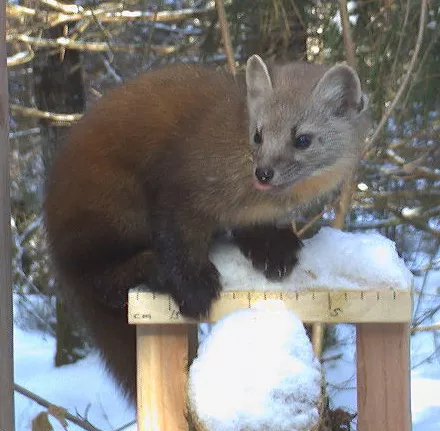
Photo credit WDNR Staff
Martens help manage rodent populations by eating mice. They also eat rabbits, chipmunks, red squirrels, insects, berries and nuts according to the National Park Service.
How can you help?
- Pick up trash and secure your trashcans to prevent animals from eating items they mistake for food.
- Never throw food out of your car window as it may draw wildlife dangerously close to the road.
- Avoid cutting trees during their nesting period between March 15 and May 31 in the northern Wisconsin range territory.
Ornate Box Turtle
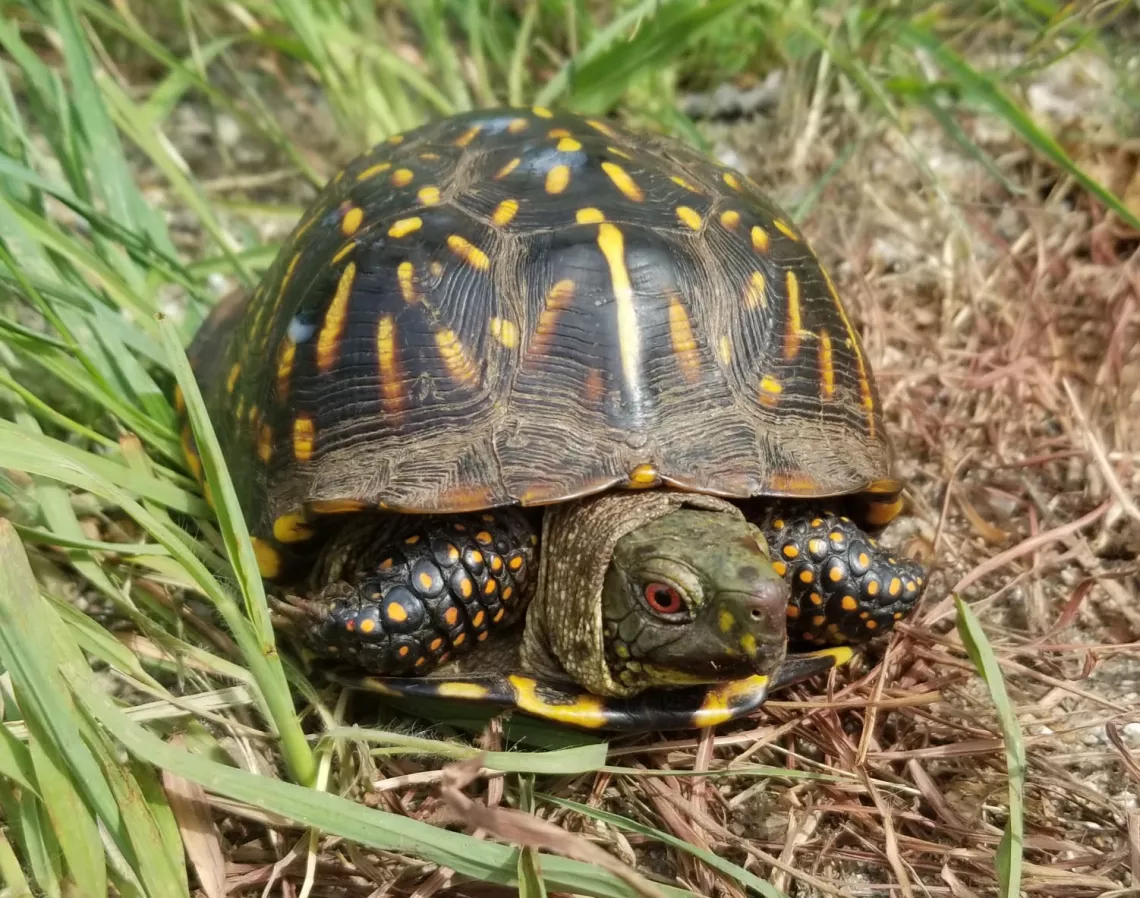
Photo Credit Rori Paloski, WDNR
As described by the USDA Forest Service, the ornate box turtle has a life span of between 32-37 years and eats various insects and invertebrates such as caterpillars, grasshoppers, beetles, and earthworms. Insects make up 90 percent of their diet.
How can you help?
- Slow down while driving on roadways. Obey speed limits and watch for animals in your path.
- Safely allowing animals to cross the road will not only save their life, but will keep you, your passengers and vehicle safe as well.
- Mow your lawn during the heat of the day when turtles will be inactive and under cover.
Rusty Patched Bumble Bee
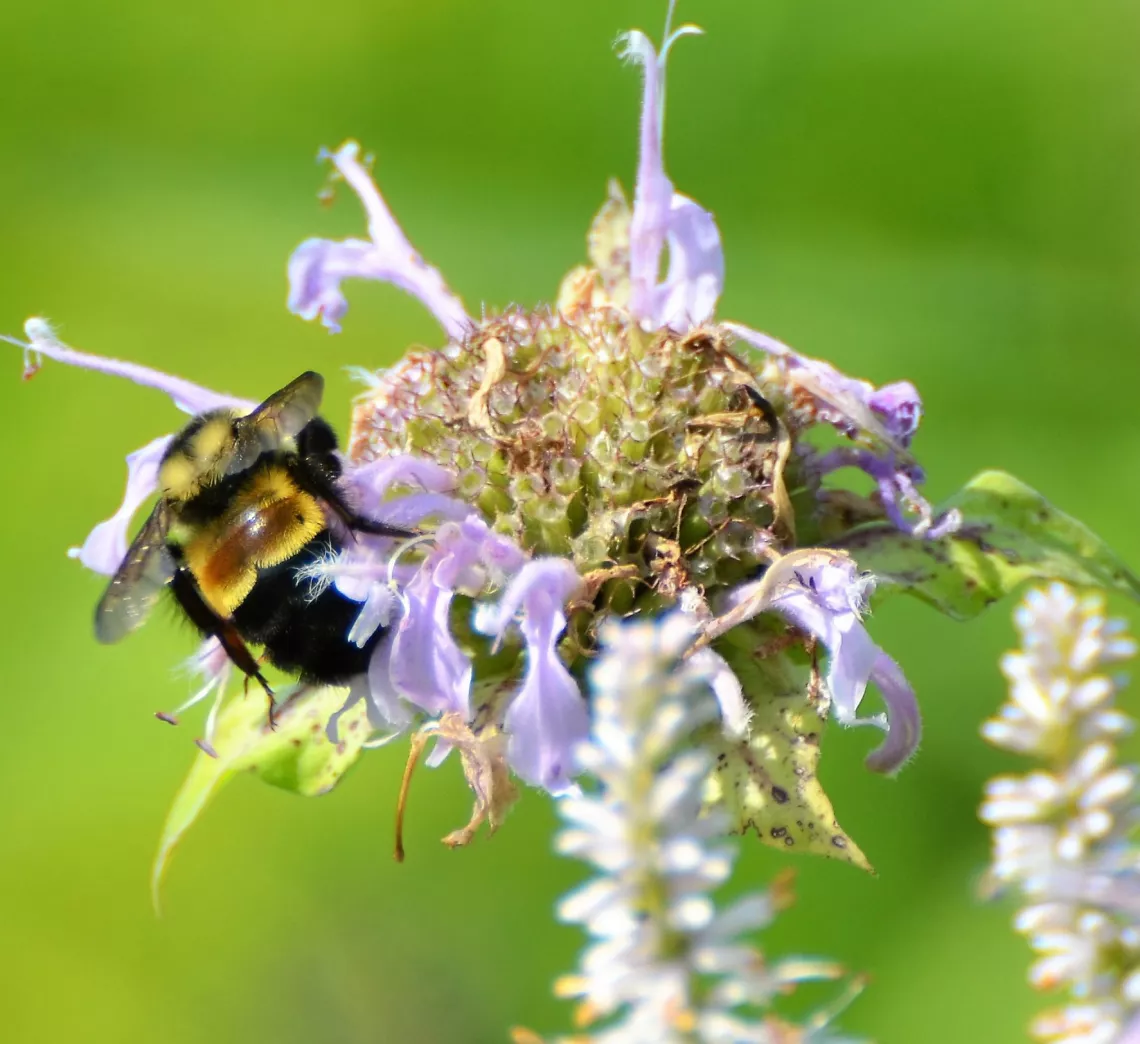
Photo Credit: Jay Watson, WDNR
According to US Fish and Wildlife Services, the economic value of pollination services provided by native insects (mostly bees) is estimated at $3 billion per year in the United States.
Rusty patched bumble bees contribute to our food security and our ecosystems. They are a keystone species, which means they are necessary not only for native wildflowers, but also for creating seeds and fruits that feed wildlife from songbirds to bears. Wisconsin is one of only 9 states where they can be found.
If you'd like to learn more, the Rusty patched bumble bee fact sheet has more information
How can you help?
- Provide natural areas by designating some un-mowed, brushy areas and do not disturb bumble bee nests if you find them.
- Grow a garden with native plants or add a flowering tree or shrub to your yard.
- Limit the use of pesticide that can be lethal to bees, other pollinators and wildlife.
Little Brown Bat
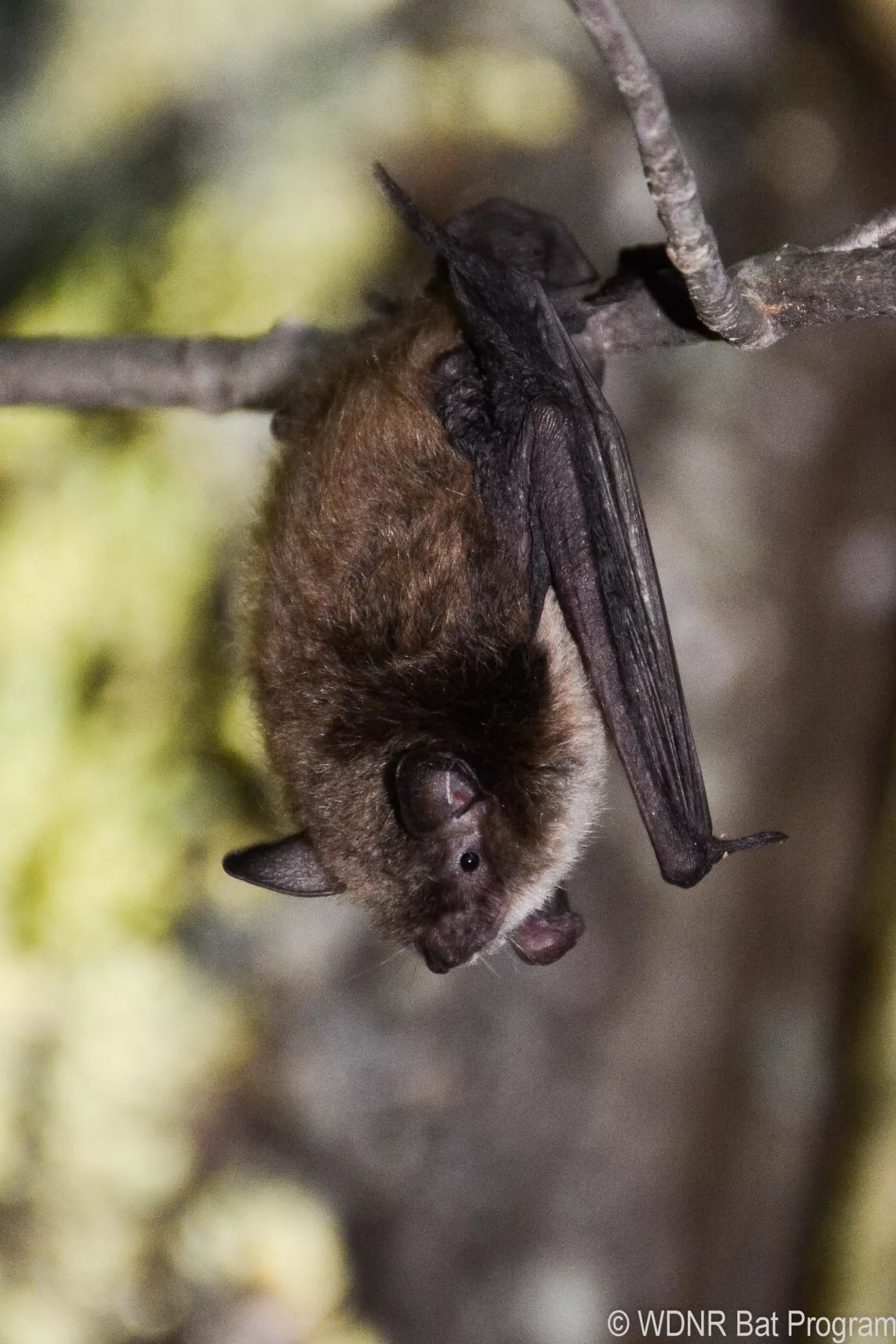
Photo CreditHeather Kaarakka, WDNR
Bats are a vital part of our ecosystems. They consume agricultural and forest pests, and natural predators of biting insects. Bats also play an important role in reducing risks of insect-borne diseases such as the West Nile Virus. Wisconsin populations have been rapidly declining since 2014 due to the discovery of a devastating fungal disease that is deadly to bats, per WDNR.
How can you help?
- Do not enter caves or mines with bats between October and May. Even quiet activities may disturb hibernating bats.
- Watch a video on how to build your own bat house: https://dnr.wisconsin.gov/topic/WildlifeHabitat/BatHouse.html
Gray Wolf
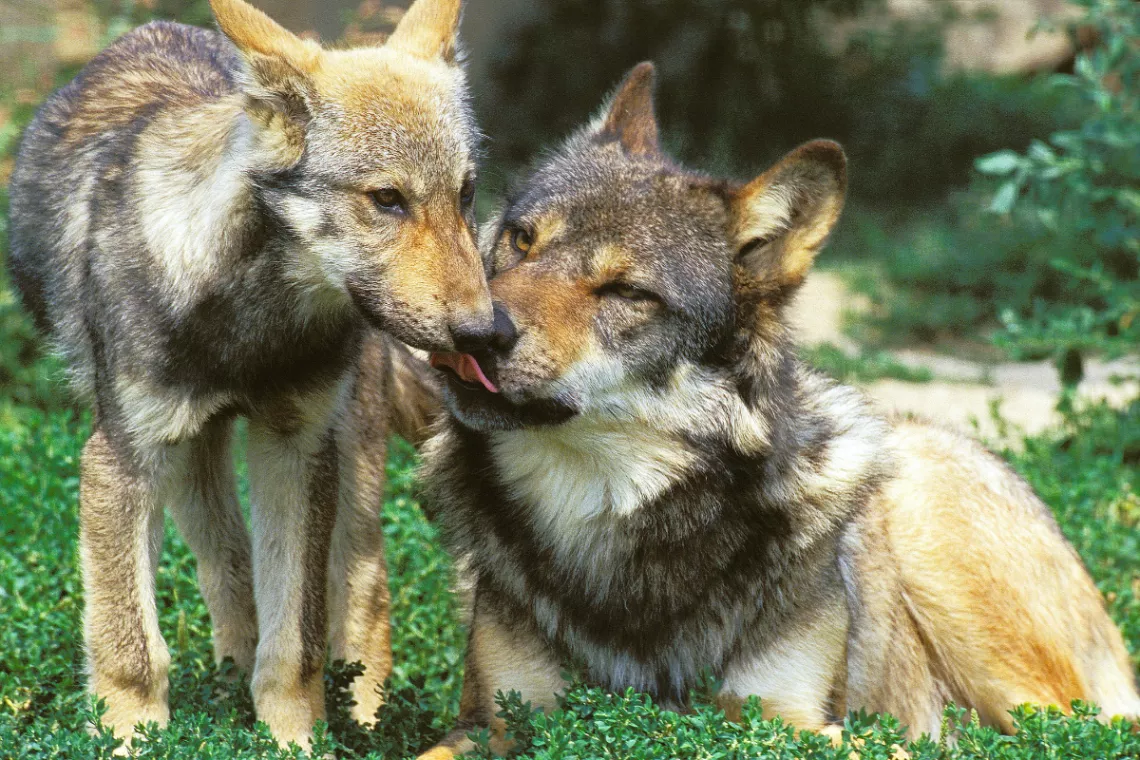
Wolves play an integral role in balancing our delicate ecosystem. They reduce incidents of deer-car collisions by moving deer deeper into the forest and away from roads. As cited in WDNR Wolf Management Plan, recent studies have shown a 24% average reduction in crashes in areas where wolves are present.
Wolves keep the deer herd healthy by removing the old, sick and weak, which can slow the spread of diseases like Lyme and Chronic Wasting Disease (CWD). Ticks live on deer and there are more than 5000 cases of Lyme disease in humans each year in Wisconsin, along with other emerging tick-borne diseases like babesiosis and ehrlichiosis, per the Wisconsin Department of Health Services. CWD is fatal to deer and found in almost all counties in Wisconsin, with the exception of a few Northern counties where wolf populations are prevalent. Check out this new factsheet the Wildlife Team put together about wolves.
Located on the Wisconsin Department of Natural Resources (WDNR) website, the Natural Heritage Inventory database is Wisconsin's most comprehensive source of rare species data. The data is used for various purposes, including research, land management, DNR property planning, community planning, conservation planning and review of public and private activities across the state. You can search by county or township for rare species, indicated by name, group and both Wisconsin and Federal endangered listing status here:
https://dnr.wisconsin.gov/topic/NHI/Data
On May 1, the House of Representatives passed Rep. Boebert's bill, HR764, that would remove Endangered Species protections from Wisconsin's gray wolves. Wisconsin Representatives Mark Pocan and Gwen Moore voted against the bill. The Biden Administration made a strong statement against the bill. Before the bill becomes law, it would have to pass the U.S. Senate and be signed into law by the President.
The bill would ignore established U.S. Fish and Wildlife Service science and federally delist the Gray Wolf under the Endangered Species Act. This attempt to undermine our nation’s most successful conservation law and ignore science should be strongly rebuked.
It should be up to the scientists and experts at the Fish and Wildlife Services to determine whether a species has recovered. Allowing Congress to override protections for endangered animals waters down the Endangered Species Act. The ESA exists to protect all endangered animals, not just the ones Congress determines are worthy of protection.